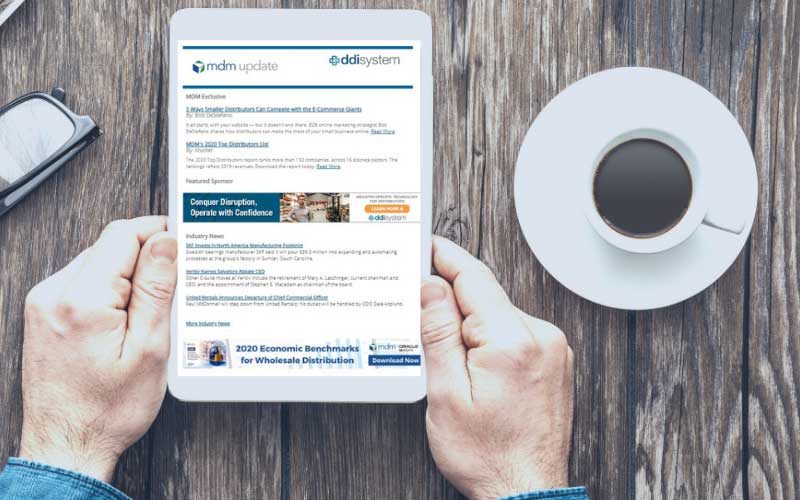For well over 100 years, distributors have slowly adapted to the evolving world: metered expansion of international resources and markets, improved supply chain competency, manufacturing technologies, geographic sourcing and market transitions; relatively consistent development of information technology, common sense coordination of product and geographic markets and relatively slow evolving distributor competitors.
Not anymore. We are witnessing the days that coming generations will talk about. It’s not necessary to recast the last 25 years’ examples, conditions and results, but it is extremely important to understand the attitudes, tools, capabilities and success factors of the winners — especially because the future will make recent years look like playground practice for distributors.
Also see: “The Threat of Distributor Disintermediation.”
Highly Critical Issues
Critically important to each distributor’s success is the continual monitoring of signals and changes in technology, sources, products, services and markets — constantly applying the right tools and capabilities to respond effectively and realistically, all while avoiding the black holes of supply chain danger. These black holes, and appropriate key responses, include:
1. Blindly following a competitor’s lead. A competitor’s rationale and priorities for making a change generally depend on that competitor’s priorities, locations, financial situation, primary suppliers, technology and applications. It’s perfectly fine to understand what competitors are doing, as well as learn from their mistakes, but your decision making should always depend on you, your customers, your suppliers and your management resource.
2. Trying to give every customer equal service. In practice, “equal service” translates to your least reliable customers getting the best service, while your best customers get mediocre service. After all, inconsistent and irregular customers order unexpectedly, and often call on you because they have been unable to find availability elsewhere, adding to their urgency. Additionally, they often pay slowly, because they see no benefit in the relationship.
3. Being overwhelmed by technology, whether it’s your customers’, your suppliers’, your competitors’, your business partners’, or your attitude toward it. The realities and demands of technology are considerable and are expanding. Although they may be extremely frustrating to deal with, they are critical to your suppliers, customers and competitors. For that reason, building your internal or contracted technology capabilities is critically important.
4. Getting caught in the wrong software decision. Using your customer’s or supplier’s software without understanding how effectively it fits your requirements, or contracting for a software suite without thoroughly understanding the contractor’s capability (initially and for the future). It may sound appealing but it is extremely important to make sure that you are aware of the degree to which that software can fill your current and future needs, style, product lines, suppliers, markets and geographies. Additionally, with the rapid pace of change among technology suppliers, critical parts of the cutting-edge software suite presented today are likely to be out of date by the time you are interested in installing it.
5. Locking into your base. Whether it be supplier, geographic source and location, technology and design, customer group, inventory commitment, operating locations, service suppliers, or rigid rules and requirements, the extreme volatility among all resources and methods demands that distributors keep flexible — and especially keep sensitive to change.
6. Accepting undesirable business in order to “build a relationship” or “gain a new customer.” Although building a new relationship demands special care and attention, when the customer’s demands and requirements are impossible to maintain, it’s rarely the case that the relationship will continue in a way that is beneficial to both you and your customer.
7.Thinking that your competition, technology, or customers’ expectations aren’t realistic or aren’t going to change. All of us regularly hear stories of embarrassing mistakes or negative experiences of the aforementioned organizations. Regardless of those tales, however, bad examples and weaknesses tend to be exaggerated. Therefore, the best strategy is to assume that every competitor, every technology and every customer is outstanding, and that our strategy always must be to always be better than that level of excellence.
Also see: “Transform Your Sales Function: Achieve Greater Sales, Profit and Customer Retention.”
Are You Prepared?
The simple fact is that from car parts to critical manufacturing equipment, HVAC to most of Amazon’s Prime customer demands, exceptional service that didn’t exist 20 years ago is now the norm — serving more industrial, commercial and retail distributors, as well as direct retail customers. Are you ready for what’s coming next? Are your facilities? Your technology? Your procedures? Your employees? Your processes? Your business partners? Are you? Somewhere, your competition is prepared.
 Robert Sabath is head of Distributor Practice, Transportation and Logistics Advisors, LLP. Please reply to Sabath with your comments, thoughts, observations and criticisms at [email protected].
Robert Sabath is head of Distributor Practice, Transportation and Logistics Advisors, LLP. Please reply to Sabath with your comments, thoughts, observations and criticisms at [email protected].


